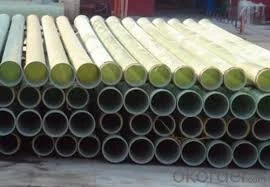
-
 Afrikaans
Afrikaans -
 Albanian
Albanian -
 Amharic
Amharic -
 Arabic
Arabic -
 Armenian
Armenian -
 Azerbaijani
Azerbaijani -
 Basque
Basque -
 Belarusian
Belarusian -
 Bengali
Bengali -
 Bosnian
Bosnian -
 Bulgarian
Bulgarian -
 Catalan
Catalan -
 Cebuano
Cebuano -
 China
China -
 China (Taiwan)
China (Taiwan) -
 Corsican
Corsican -
 Croatian
Croatian -
 Czech
Czech -
 Danish
Danish -
 Dutch
Dutch -
 English
English -
 Esperanto
Esperanto -
 Estonian
Estonian -
 Finnish
Finnish -
 French
French -
 Frisian
Frisian -
 Galician
Galician -
 Georgian
Georgian -
 German
German -
 Greek
Greek -
 Gujarati
Gujarati -
 Haitian Creole
Haitian Creole -
 hausa
hausa -
 hawaiian
hawaiian -
 Hebrew
Hebrew -
 Hindi
Hindi -
 Miao
Miao -
 Hungarian
Hungarian -
 Icelandic
Icelandic -
 igbo
igbo -
 Indonesian
Indonesian -
 irish
irish -
 Italian
Italian -
 Japanese
Japanese -
 Javanese
Javanese -
 Kannada
Kannada -
 kazakh
kazakh -
 Khmer
Khmer -
 Rwandese
Rwandese -
 Korean
Korean -
 Kurdish
Kurdish -
 Kyrgyz
Kyrgyz -
 Lao
Lao -
 Latin
Latin -
 Latvian
Latvian -
 Lithuanian
Lithuanian -
 Luxembourgish
Luxembourgish -
 Macedonian
Macedonian -
 Malgashi
Malgashi -
 Malay
Malay -
 Malayalam
Malayalam -
 Maltese
Maltese -
 Maori
Maori -
 Marathi
Marathi -
 Mongolian
Mongolian -
 Myanmar
Myanmar -
 Nepali
Nepali -
 Norwegian
Norwegian -
 Norwegian
Norwegian -
 Occitan
Occitan -
 Pashto
Pashto -
 Persian
Persian -
 Polish
Polish -
 Portuguese
Portuguese -
 Punjabi
Punjabi -
 Romanian
Romanian -
 Russian
Russian -
 Samoan
Samoan -
 Scottish Gaelic
Scottish Gaelic -
 Serbian
Serbian -
 Sesotho
Sesotho -
 Shona
Shona -
 Sindhi
Sindhi -
 Sinhala
Sinhala -
 Slovak
Slovak -
 Slovenian
Slovenian -
 Somali
Somali -
 Spanish
Spanish -
 Sundanese
Sundanese -
 Swahili
Swahili -
 Swedish
Swedish -
 Tagalog
Tagalog -
 Tajik
Tajik -
 Tamil
Tamil -
 Tatar
Tatar -
 Telugu
Telugu -
 Thai
Thai -
 Turkish
Turkish -
 Turkmen
Turkmen -
 Ukrainian
Ukrainian -
 Urdu
Urdu -
 Uighur
Uighur -
 Uzbek
Uzbek -
 Vietnamese
Vietnamese -
 Welsh
Welsh -
 Bantu
Bantu -
 Yiddish
Yiddish -
 Yoruba
Yoruba -
 Zulu
Zulu
FRP Tank Solutions for Efficient and Safe Transport of Liquids
Understanding FRP Transport Tanks A Comprehensive Guide
Fiber Reinforced Polymer (FRP) transport tanks have emerged as a vital solution for the storage and transportation of various liquids, owing to their superior strength, durability, and resistance to corrosion. These tanks are engineered to withstand harsh environmental conditions and offer a lightweight alternative to traditional materials such as steel and concrete, making them an increasingly popular choice in various industries, including chemical processing, water treatment, and food and beverage.
One of the key advantages of FRP transport tanks is their excellent corrosion resistance. Unlike metal tanks, which can succumb to rust and degradation when exposed to corrosive substances, FRP tanks maintain their integrity and performance over time. This makes them particularly suitable for transporting aggressive chemicals, wastewater, and other hazardous materials that would otherwise pose a threat to conventional storage solutions. The ability to customize the resin and fiber composition of FRP tanks further enhances their resistance to specific chemicals, ensuring safe and reliable service.
Understanding FRP Transport Tanks A Comprehensive Guide
Another compelling feature of FRP transport tanks is their thermal insulation properties. These tanks can effectively minimize thermal transfer, which is crucial when transporting temperature-sensitive materials like certain pharmaceuticals or food products. By maintaining consistent temperatures during transit, these tanks help to preserve the quality and safety of their contents.
frp transport tank

Moreover, FRP tanks generally require less maintenance than their metal counterparts. The absence of rust and corrosion means that they do not require frequent inspections or costly protective coatings. This aspect not only saves time but also reduces long-term operational expenses, making FRP tanks a wise investment for businesses.
In terms of design flexibility, FRP technology allows for the creation of tanks in various shapes and sizes to accommodate specific needs. This adaptability is particularly beneficial for companies that may have unique spatial constraints or product requirements. Custom manufacturing options also ensure compliance with industry standards and regulations.
As environmental concerns continue to shape industrial practices, the sustainability aspect of FRP transport tanks cannot be overlooked. Many FRP materials are recyclable, thus reducing waste and promoting a circular economy approach in industrial settings.
In conclusion, FRP transport tanks offer a myriad of benefits, including superior corrosion resistance, lightweight construction, excellent thermal insulation, reduced maintenance requirements, and design flexibility. As industries increasingly seek efficient and sustainable storage solutions, FRP transport tanks are poised to play a pivotal role in the future of liquid transportation and storage. Their innovative features not only enhance operational efficiencies but also contribute positively to environmental sustainability.









